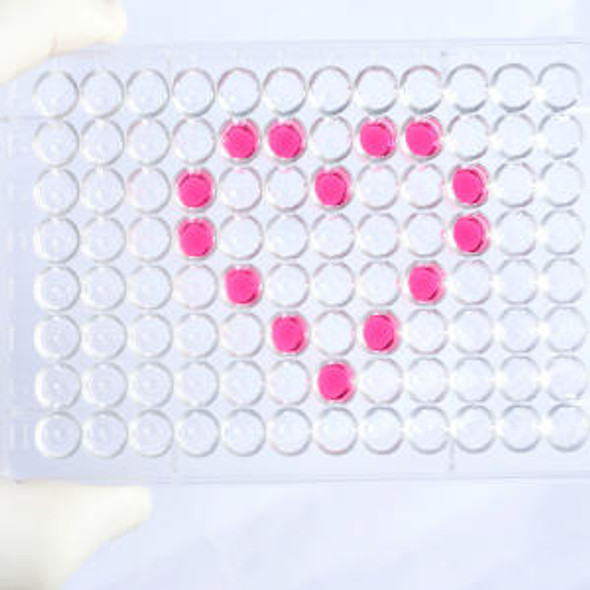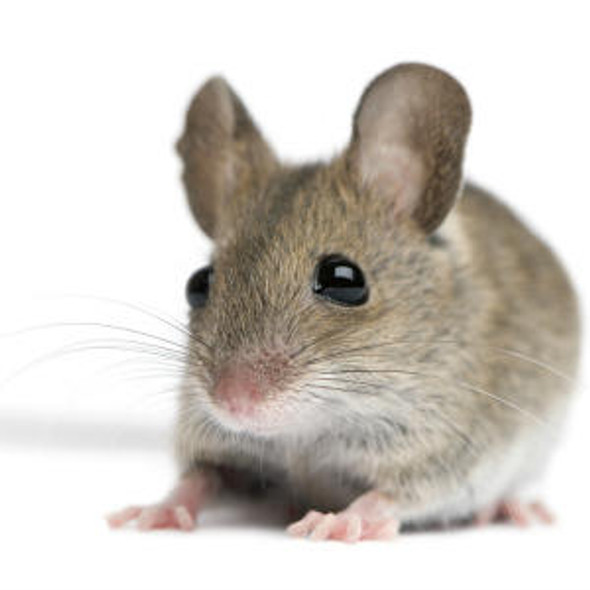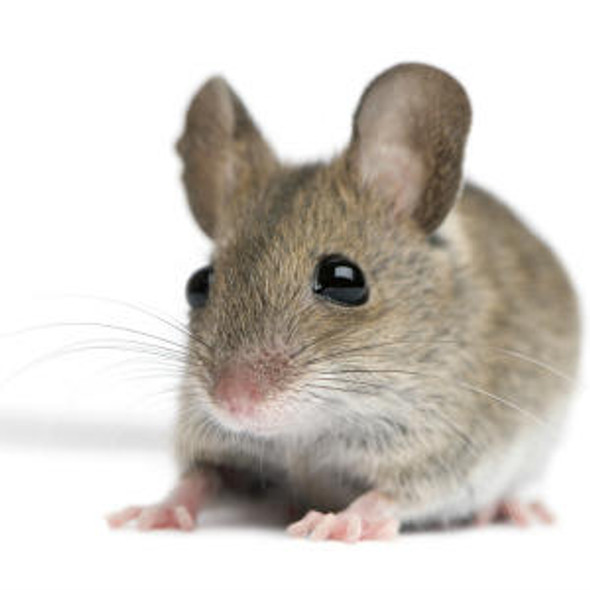Mouse STAT6 (Signal Transducer And Activator Of Transcription 6) ELISA Kit (MOES01479)
- SKU:
- MOES01479
- Product Type:
- ELISA Kit
- Size:
- 96 Assays
- Uniprot:
- P52633
- Sensitivity:
- 46.88pg/mL
- Range:
- 78.13-5000pg/mL
- ELISA Type:
- Sandwich
- Reactivity:
- Mouse
- Sample Type:
- Serum, plasma and other biological fluids
- Research Area:
- Epigenetics and Nuclear Signaling
Description
Mouse STAT6 (Signal Transducer And Activator Of Transcription 6) ELISA Kit
The Mouse STAT6 (Signal Transducer and Activator of Transcription 6) ELISA Kit is designed for the precise measurement of STAT6 levels in mouse serum, plasma, and cell culture samples. This kit offers exceptional sensitivity and specificity, ensuring accurate and consistent results for various research purposes.STAT6 is a key transcription factor involved in regulating immune responses and inflammation. It plays a critical role in various biological processes, including allergic reactions, autoimmune diseases, and cancer.
Monitoring STAT6 levels can provide valuable insights into the underlying mechanisms of these conditions and aid in the development of targeted therapies.With its high-quality components and user-friendly protocol, the Mouse STAT6 ELISA Kit from AssayGenie is a valuable tool for researchers studying immune-related disorders and seeking to advance our understanding of STAT6 signaling pathways. Trust AssayGenie for reliable and robust ELISA kits to support your research endeavors.
| Assay type: | Sandwich |
| Format: | 96T |
| Assay time: | 4.5h |
| Reactivity: | Mouse |
| Detection Method: | Colormetric |
| Detection Range: | 78.13-5000 pg/mL |
| Sensitivity: | 46.88 pg/mL |
| Sample Volume Required Per Well: | 100µL |
| Sample Type: | Serum, plasma and other biological fluids |
| Specificity: | This kit recognizes Mouse STAT6 in samples. No significant cross-reactivity or interference between Mouse STAT6 and analogues was observed. |
This ELISA kit uses Sandwich-ELISA as the method. The micro ELISA plate provided in this kit has been pre-coated with an antibody specific to Mouse STAT6. Standards or samples are added to the appropriate micro ELISA plate wells and combined with the specific antibody. Then a biotinylated detection antibody specific for Mouse STAT6 and Avidin-Horseradish Peroxidase (HRP) conjugate are added to each micro plate well successively and incubated. Free components are washed away. The substrate solution is added to each well. Only those wells that contain Mouse STAT6, biotinylated detection antibody and Avidin-HRP conjugate will appear blue in color. The enzyme-substrate reaction is terminated by adding Stop Solution and the color turns yellow. The optical density (OD) is measured spectrophotometrically at a wavelength of 450 nm ± 2 nm. The OD value is proportional to the concentration of Mouse STAT6. The concentration of Mouse STAT6 in samples can be calculated by comparing the OD of the samples to the standard curve.
| UniProt Protein Function: | STAT6: transcription factor of the STAT family. Plays a central role in IL4-mediated biological responses. Induces the expression of BCL2L1/BCL-X(L), which is responsible for the anti-apoptotic activity of IL4. May function in the differentiation of T helper 2 cells and class switch of immunoglobulins. Forms homo- or heterodimers that translocate into the nucleus where they regulate transcription. |
| UniProt Protein Details: | Protein type:DNA-binding; Transcription factor Chromosomal Location of Human Ortholog: 12q13 Cellular Component: nucleoplasm; nuclear chromatin; cytoplasm; cytosol; lipid raft Molecular Function:identical protein binding; signal transducer activity; protein binding; transcription factor activity; protein phosphatase binding Biological Process: regulation of transcription from RNA polymerase II promoter; T-helper 1 cell lineage commitment; negative regulation of T-helper 2 type immune response; transcription, DNA-dependent; positive regulation of interferon type I production; innate immune response; mammary gland epithelial cell proliferation; positive regulation of transcription from RNA polymerase II promoter; negative regulation of transcription from RNA polymerase II promoter; signal transduction; positive regulation of isotype switching to IgE isotypes; regulation of cell proliferation |
| NCBI Summary: | The protein encoded by this gene is a member of the STAT family of transcription factors. In response to cytokines and growth factors, STAT family members are phosphorylated by the receptor associated kinases, and then form homo- or heterodimers that translocate to the cell nucleus where they act as transcription activators. This protein plays a central role in exerting IL4 mediated biological responses. It is found to induce the expression of BCL2L1/BCL-X(L), which is responsible for the anti-apoptotic activity of IL4. Knockout studies in mice suggested the roles of this gene in differentiation of T helper 2 (Th2) cells, expression of cell surface markers, and class switch of immunoglobulins. Alternative splicing results in multiple transcript variants. [provided by RefSeq, May 2010] |
| UniProt Code: | P52633 |
| NCBI GenInfo Identifier: | 296010864 |
| NCBI Gene ID: | 6778 |
| NCBI Accession: | NP_001171549. 1 |
| UniProt Secondary Accession: | P52633,P52633, |
| UniProt Related Accession: | P42226 |
| Molecular Weight: | 94kDa |
| NCBI Full Name: | signal transducer and activator of transcription 6 isoform 1 |
| NCBI Synonym Full Names: | signal transducer and activator of transcription 6 |
| NCBI Official Symbol: | STAT6 |
| NCBI Official Synonym Symbols: | STAT6B; STAT6C; D12S1644; IL-4-STAT |
| NCBI Protein Information: | signal transducer and activator of transcription 6 |
| UniProt Protein Name: | Signal transducer and activator of transcription 6 |
| UniProt Synonym Protein Names: | IL-4 Stat |
| Protein Family: | Signal transducer and transcription activator |
| UniProt Gene Name: | STAT6 |
| UniProt Entry Name: | STAT6_HUMAN |
As the OD values of the standard curve may vary according to the conditions of the actual assay performance (e. g. operator, pipetting technique, washing technique or temperature effects), the operator should establish a standard curve for each test. Typical standard curve and data is provided below for reference only.
| Concentration (pg/mL) | O.D | Average | Corrected |
| 5000 | 2.536 2.558 | 2.547 | 2.472 |
| 2500 | 1.712 1.754 | 1.733 | 1.658 |
| 1250 | 1.003 0.973 | 0.988 | 0.913 |
| 625 | 0.525 0.529 | 0.527 | 0.452 |
| 312.5 | 0.275 0.263 | 0.269 | 0.194 |
| 156.25 | 0.19 0.178 | 0.184 | 0.109 |
| 78.13 | 0.126 0.134 | 0.13 | 0.055 |
| 0 | 0.067 0.083 | 0.075 | -- |
Precision
Intra-assay Precision (Precision within an assay): 3 samples with low, mid range and high level Mouse STAT6 were tested 20 times on one plate, respectively.
Inter-assay Precision (Precision between assays): 3 samples with low, mid range and high level Mouse STAT6 were tested on 3 different plates, 20 replicates in each plate.
| Intra-assay Precision | Inter-assay Precision | |||||
| Sample | 1 | 2 | 3 | 1 | 2 | 3 |
| n | 20 | 20 | 20 | 20 | 20 | 20 |
| Mean (pg/mL) | 234.03 | 693.87 | 1971.64 | 211.13 | 675.35 | 2095.65 |
| Standard deviation | 14.39 | 33.93 | 80.05 | 10.96 | 36.06 | 77.33 |
| C V (%) | 6.15 | 4.89 | 4.06 | 5.19 | 5.34 | 3.69 |
Recovery
The recovery of Mouse STAT6 spiked at three different levels in samples throughout the range of the assay was evaluated in various matrices.
| Sample Type | Range (%) | Average Recovery (%) |
| Serum (n=5) | 93-106 | 99 |
| EDTA plasma (n=5) | 89-105 | 96 |
| Cell culture media (n=5) | 86-100 | 93 |
Linearity
Samples were spiked with high concentrations of Mouse STAT6 and diluted with Reference Standard & Sample Diluent to produce samples with values within the range of the assay.
| Serum (n=5) | EDTA plasma (n=5) | Cell culture media (n=5) | ||
| 1:2 | Range (%) | 85-100 | 99-113 | 91-103 |
| Average (%) | 91 | 105 | 97 | |
| 1:4 | Range (%) | 88-101 | 85-95 | 85-100 |
| Average (%) | 93 | 89 | 92 | |
| 1:8 | Range (%) | 88-104 | 86-100 | 82-97 |
| Average (%) | 96 | 92 | 88 | |
| 1:16 | Range (%) | 86-99 | 82-93 | 87-99 |
| Average (%) | 93 | 86 | 92 |
An unopened kit can be stored at 4°C for 1 month. If the kit is not used within 1 month, store the items separately according to the following conditions once the kit is received.
| Item | Specifications | Storage |
| Micro ELISA Plate(Dismountable) | 8 wells ×12 strips | -20°C, 6 months |
| Reference Standard | 2 vials | |
| Concentrated Biotinylated Detection Ab (100×) | 1 vial, 120 µL | |
| Concentrated HRP Conjugate (100×) | 1 vial, 120 µL | -20°C(shading light), 6 months |
| Reference Standard & Sample Diluent | 1 vial, 20 mL | 4°C, 6 months |
| Biotinylated Detection Ab Diluent | 1 vial, 14 mL | |
| HRP Conjugate Diluent | 1 vial, 14 mL | |
| Concentrated Wash Buffer (25×) | 1 vial, 30 mL | |
| Substrate Reagent | 1 vial, 10 mL | 4°C(shading light) |
| Stop Solution | 1 vial, 10 mL | 4°C |
| Plate Sealer | 5 pieces | |
| Product Description | 1 copy | |
| Certificate of Analysis | 1 copy |
- Set standard, test sample and control (zero) wells on the pre-coated plate and record theirpositions. It is recommended to measure each standard and sample in duplicate. Note: addall solutions to the bottom of the plate wells while avoiding contact with the well walls. Ensuresolutions do not foam when adding to the wells.
- Aliquot 100µl of standard solutions into the standard wells.
- Add 100µl of Sample / Standard dilution buffer into the control (zero) well.
- Add 100µl of properly diluted sample (serum, plasma, tissue homogenates and otherbiological fluids) into test sample wells.
- Cover the plate with the sealer provided in the kit and incubate for 90 min at 37°C.
- Aspirate the liquid from each well, do not wash. Immediately add 100µL of BiotinylatedDetection Ab working solution to each well. Cover the plate with a plate seal and gently mix. Incubate for 1 hour at 37°C.
- Aspirate or decant the solution from the plate and add 350µL of wash buffer to each welland incubate for 1-2 minutes at room temperature. Aspirate the solution from each well andclap the plate on absorbent filter paper to dry. Repeat this process 3 times. Note: a microplatewasher can be used in this step and other wash steps.
- Add 100µL of HRP Conjugate working solution to each well. Cover with a plate seal andincubate for 30 min at 37°C.
- Aspirate or decant the solution from each well. Repeat the wash process for five times asconducted in step 7.
- Add 90µL of Substrate Reagent to each well. Cover with a new plate seal and incubate forapproximately 15 min at 37°C. Protect the plate from light. Note: the reaction time can beshortened or extended according to the actual color change, but not by more than 30min.
- Add 50 µL of Stop Solution to each well. Note: Adding the stop solution should be done inthe same order as the substrate solution.
- Determine the optical density (OD value) of each well immediately with a microplate readerset at 450 nm.






